People often ask about the difference between Cat6 and Cat6a. Are Cat6a cables better than Cat6 cables? Of course, the answer is yes, but it doesn’t mean that Cat6a cables are more suitable for you. It depends on the real conditions. Let’s get down to Cat6 and Cat6a in this article.
What is a Cat6 Ethernet cable?
Cat6 Ethernet cables, also called Category 6 cables, are the advanced version of Cat5e cables. Category 6 is the network cable standard defined by EIA (Electronic Industries Alliance) and TIA (Telecommunications Industry Association). Category 6 was formalized in 2001 and then has been more widespread. The maximum data transmission can reach up to 250MHz. Featuring four twisted pairs, Cat6 Ethernet cables can be terminated by an RJ45 connector or keystone jack.

What is a Cat6a Ethernet cable?
Cat6a Ethernet cables mean the augmented Category 6 Ethernet cables. The Cat6a cable, the form of Gigabit Ethernet cabling, was defined in 2018. The Cat6a cable consists of tighter twisted pairs to avoid crosstalk interference. It has a transmission bandwidth ranging from 250 up to 500 MHz frequency. The Cat6a Ethernet cable is compatible with Cat6 and Cat5e cables.

Types of Cat6 and Cat6a cables
In general, there are two different types of Cat6 and Cat6a cables: shielded or unshielded. Shielded cables usually feature an outer shielding structure around each twisted pair or all pairs. Based on different applications, there are different levels of shielding such as F/UTP, U/FTP, F/FTP, SF/FTP, S/FTP, and so on. Here are some technical terms that you should know before learning more about the types of Cat6 and Cat6a cables.
- U/UTP (Unshielded twisted pairs): U/UTP is the most common one on the market, it is also called UTP. UTP is widely accepted by most people. Consisting of four twisted pairs, UTP has no shielding structure. But it usually comes with symmetrical pairs and a balanced design to reduce NEXT (New-end crosstalk).
- F/UTP (Foiled with unshielded twisted pairs): F/UTP means that the cable has four unshielded twisted pairs that are wrapped into an overall outer foil shield.
- U/FTP (Unshielded with foiled twisted pairs): U/FTP has no outer shielding but each twisted pair has an individual foil screen to help avoid crosstalk interference.
- F/FTP (Foiled with foiled twisted pairs): F/FTP has four foil-shielded twist pairs with an outer foil shielding structure for better protection.
- S/FTP (Shielded with foiled twisted pairs): This type of shielded cable features four foil-shielded twisted pairs with an overall outer braid screen.
- SF/FTP (Shielded and foiled with foiled twisted pairs): SF/FTP provides the maximum protection for cables from interference. It comes with a braid and foiled shielding structure with foiled twisted pairs.

In fact, as an advancement of Cat6 cables, most Cat6a cables on the market are shielded and they are often used in data centers. Unshielded cables are very popular and enough for the home network while the shielding structure can help effectively block interference from Electromagnetic Interference (EMI). But once you have chosen the shielded cables, you should pair them with shielded RJ45 connectors, keystone jacks, and patch panels for the perfect data transmission.
Cat6 vs Cat6a: The Similarities
Cat6 and Cat6a cables are commonly used in a modern system. Cat6a is the augmented version of Cat6 cables, so they actually share many common features.
- Both Cat6 and Cat6a cables can be unshielded twisted pairs or shielded twisted pairs
- Support 1000 Mbps to 100 meters (328 feet)
- Both Cat6 and Cat6a Ethernet cables feature 8 copper wires that are twisted into 4 pairs
- Both can be terminated according to T568A or T568B wiring scheme
- Most Cat6 and Cat6a cables on the market typically use 23AWG conductors
- Cable jackets can be customized for different applications (e.g. outdoor use or plenum space application)

What is the difference between Cat6 and Cat6a?
Cat6 and Cat6a cables differ in cable structure and performance, and when they are applied to a cabling system, they can also differ in the required equipment, installation cost, and so on. Want to know more information about the difference between Cat6 and Cat6a? Scroll down to learn what you want to know.
Speed
The most distinctive difference between Cat6 and Cat6a is the data transmission speed. Both Cat6 cables and Cat6a cables can support data transmission rates to 10 Gbps. But Cat6 cables can only keep 10 Gbps to 37~55 meters (121~180 feet), and Cat6a cables can relay 10 Gbps up to 100 meters (328 feet).
Structure
In general, Cat6a cables can be thicker than Cat6 cables, so they also feature thicker cable jackets and copper conductors. Compared to Cat6 cables, Cat6a cables require higher standard RJ45 connectors and keystone jacks. In addition, Cat6a cables have tighter twisted pairs than Cat6 cables.
Bandwidth
Cat6a has a great upgrading as it has the double bandwidth frequency as Cat6. The bandwidth frequency of Cat6a cables can reach 500 MHz, which allows for more stable data transmission and longer distances.
Bend Radius
Usually, you should not bend a cable too much or it will damage the wiring and affect the performance. Bend radius means the minimum radius that a cable can be bent without damage. The bend radius mainly depends on the cable structure and materials. In general, bend radius is directly proportional to the diameter of cable. Because of the thickness and bulkiness, Cat6a cables have a larger bend radius than Cat6 cables and they can occupy more room.
Cost of installation
Compared to Cat6, Cat6a allows for a higher speed, greater bandwidth frequency, and longer service life as the Cat6a cables use the premium material, so the cost of Cat6a can be higher than Cat6 cables. In addition, if you want to upgrade your network installation to Cat6a, you should not only replace the cable but also use higher-performance switches and other network equipment. The installation of Cat6a cables can be more difficult and complex than Cat6 cables, so a network cabling expert is recommended.

CAT6 and CAT6A Comparison Chart
|
Category |
Cat 6 |
Cat 6a |
|
Data Transmission |
1000 BASE-TX |
10GBASE-T |
|
Bandwidth Frequency |
0~250 MHz |
0~500 MHz |
|
Maximum Distance |
100 meters (328 feet) |
100 meters (328 feet) |
|
Distance for 1G |
100 meters |
100 meters |
|
Distance for 10G |
37~55 meters |
100 meters |
|
Common Gauges in Conductors |
23 AWG |
23 AWG |
|
Cable Jacket |
Thinner |
Thicker |
|
Connector Types |
RJ45 connector |
RJ45 connector |
Cat6 vs Cat6a: Which one should I use?
When deciding what Ethernet cabling to install, you should take many factors into consideration. For example, what is your expected cost? What current application you are using and what future applications you will use? Do you need extra-high network speed?
Currently, Cat6 network cables are surely enough for your normal home network use. For instance, you can watch a movie in HD and play computer games without any interference. Cat6 cables are great for 60W and 90W PoE (Power over Ethernet). But if you foresee the 10Gbps need in the future, you’d better install Cat6a.
Cat6a is very suitable for large networks that need large data, so it is more recommended for new buildings, office networks, and data centers for its higher network speed and 10Gbps up to 100 meters. Cat6a is also backwards compatible with Cat6, Cat5e, and Cat5, which is a good solution for future network upgrading.

Walking you through the difference between Cat6 and Cat6a, you may have a better understanding of how to choose Cat6 and Cat6a cables. If you want to learn more about the difference and products, don’t hesitate to contact our team.
FAQs
Can CAT6 handle 10Gbps?
Yes, but Cat6 only supports data rates of 10Gbps in the distance of 37~55 meters.
Is Cat6a compatible with Cat6?
Cat6a cables still use RJ45 connectors, and they are backward compatible with Cat6 and Cat5e cables.
Is it worth upgrading Cat6 to Cat6a?
It depends on your needs, but Cat6a has a superior performance than Cat6 and it has proved to be the great solution to future applications.
Is Cat6a good for home network?
Cat6 cables have been widely used in home network installation, which is enough for most people. But if you have special or higher needs for network speed, you can consider installing Cat6a at home.
For more information on this topic, you can keep up on our blogs. While VCELINK offers general and basic information for our customers and other visitors to the website, it’s not professional advice.
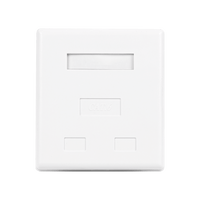
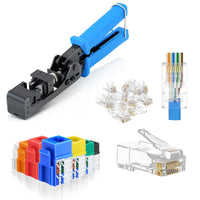
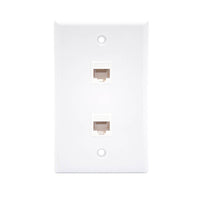
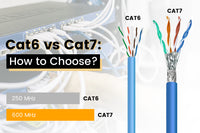
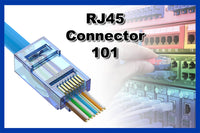

Be the first one to comment.
Leave a comment